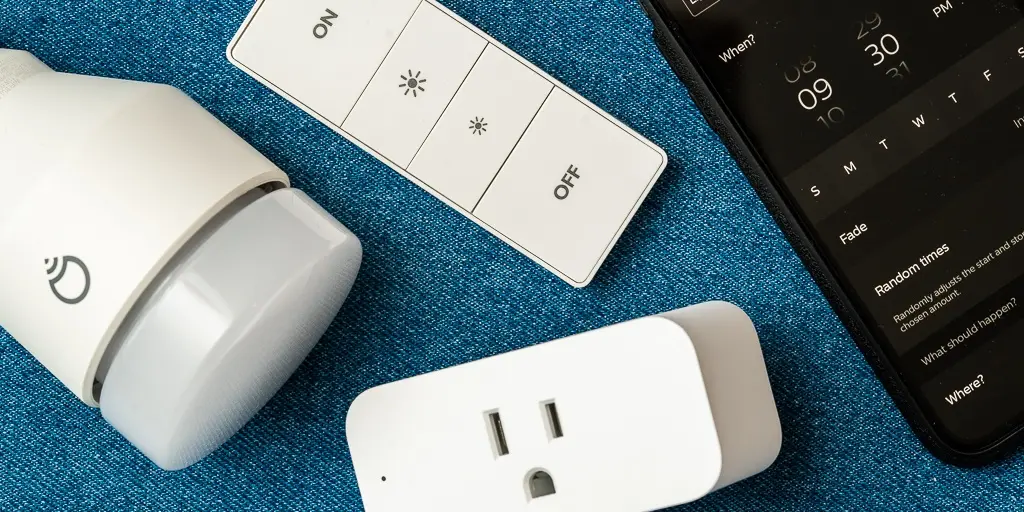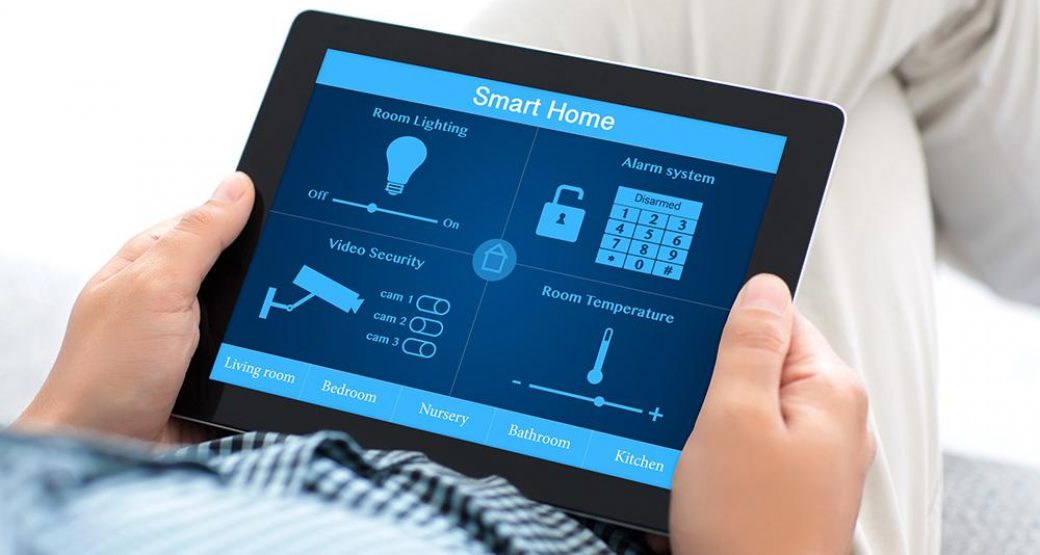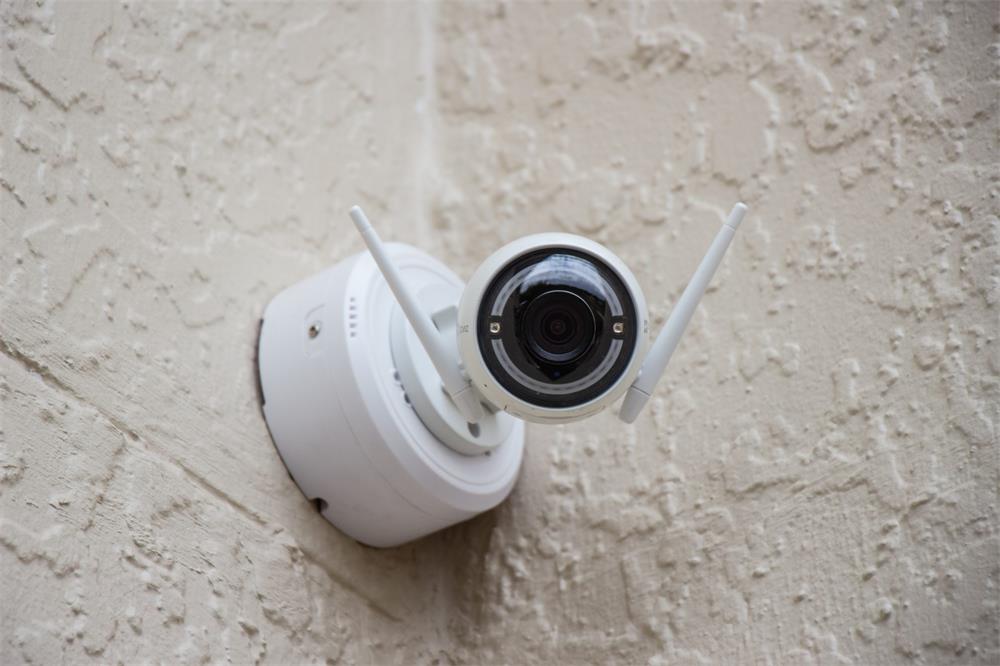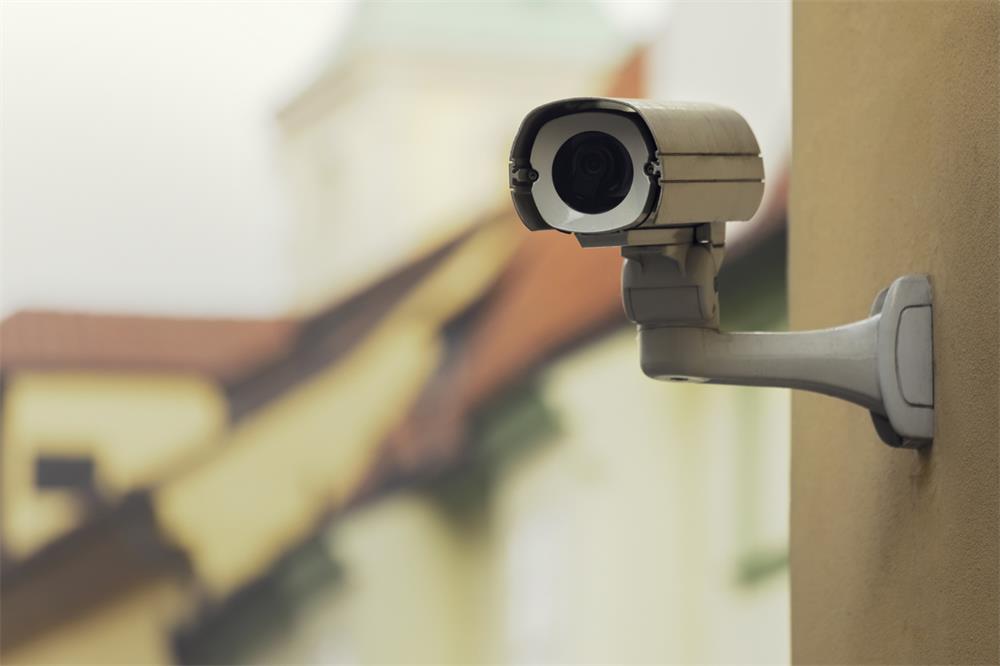Contents
The Wonders of Smart Lighting: A Two-Fold Solution for Home Security and Energy Conservation
A Brighter Future with Smarter Lighting Solutions
Smart lighting is an innovative technology that offers a wide range of benefits to homeowners. Unlike traditional lighting systems, smart lights are highly advanced and provide more control over your home’s illumination.
These lights can be remotely controlled through mobile apps or voice assistants such as Amazon Alexa or Google Assistant, making them convenient and easy to use. One significant advantage of smart lighting is that it offers energy-efficient lighting solutions.
With features like motion sensors, timers, and other advanced features that automatically turn lights on and off, you can significantly reduce your energy consumption while still enjoying a brightly lit home. This means lower electricity bills for homeowners who use smart lighting systems.
The Importance of Securing Your Home and Saving Energy
When it comes to protecting your home from intruders, there are many options available in the market. However, not all security systems are created equal.
A high-tech security system can be expensive to install and maintain, but integrating smart lighting into your home security plan can be a cost-effective solution. Smart lights are an integral part of securing your home because they create the illusion that someone is always at home by turning on/off at random intervals throughout the day.
By doing so, they deter burglars from breaking into your property as they will assume someone is present in the house. Moreover, using smart lighting helps conserve energy by only illuminating areas when needed instead of keeping all the lights on all day long unnecessarily.
By saving energy through efficient use of smart light fixtures across multiple zones in their house — whether indoor or outdoor — homeowners who make the switch ultimately benefit from reduced monthly expenses along with added security measures. Using smart lighting offers an excellent two-fold solution for homeowners who are looking to secure their homes and reduce energy consumption.
Not only do smart lights offer a more efficient way of lighting your home, but they help you feel more secure by creating the illusion that someone is present even when you’re not at home. By integrating smart lighting into your home security system, you can protect your property from intruders while saving money on utility bills.
Smart Lighting for Home Security
How Smart Lighting Can Deter Intruders
One of the main benefits of using smart lighting for home security is its ability to deter intruders. Smart lights can be programmed to turn on and off at specific times, giving the impression that someone is home even when they’re not.
This can discourage burglars who look for empty houses as potential targets. Moreover, smart lights can be linked with other security devices such as motion sensors and cameras.
When a motion sensor detects movement, it triggers the lights to turn on automatically. This sudden burst of light can startle any intruder and make them think twice before attempting to break in.
Different Types of Smart Lighting Systems Available in the Market
There are various types of smart lighting systems available in the market, which can be categorized based on their connectivity, functionality, and design. Some popular ones include:
– Wi-Fi-enabled smart bulbs: These bulbs connect directly with your Wi-Fi router and can be controlled through a mobile app or voice commands. – Zigbee or Z-wave-based systems: These systems require a hub or gateway device to connect with other smart devices in your home.
– Wired-in smart switches: These are installed in place of traditional light switches and offer advanced features such as dimming, color temperature control, etc. Each system has its own benefits and limitations depending on your requirements and budget.
Placement of Smart Lights to Maximize Security
The placement of smart lights is crucial when it comes to maximizing home security. It’s important to strategically place them at key entry points such as front doors, back doors, garages or any other areas that might attract intruders. It’s also important to pay attention to the intensity and direction of light.
For instance, placing a bright light directly facing a camera could result in a washed-out image, making it difficult to identify any intruders. Instead, position the light slightly above or below the camera to capture clear footage.
Furthermore, it’s a good idea to use smart lights with motion sensors for areas like driveways or backyards. This ensures that the lights turn on automatically when someone approaches, illuminating any potential threat.
Energy Conservation with Smart Lighting
Illuminating the Path to Energy Savings
Smart lighting is not only useful for enhancing home security, but it can also help you save on your electricity bills. According to the U.S. Department of Energy, lighting can account for up to 25% of a home’s electricity usage, making it one of the largest energy expenses in a typical household. Smart lighting systems provide an effective solution that allows you to control when and where lights turn on, reducing unnecessary energy consumption while still maintaining a comfortable level of illumination.
Comparing Traditional Lighting and Smart Lighting
Traditional lighting typically uses incandescent or fluorescent bulbs that consume large amounts of energy and generate heat. In contrast, smart lights utilize LED technology that offers significant energy savings due to their lower wattage requirements and higher efficiency levels. For example, a traditional 60-watt bulb can be replaced with an LED bulb that only consumes 10 watts while providing equivalent brightness.
Moreover, smart lights come equipped with various features such as motion sensors and timers that allow you to customize your lighting preferences based on your lifestyle and daily routines. This means you can program your lights to turn off automatically when no one is present in a room or lower their brightness during daylight hours.
Tips for Optimizing Energy Savings
Here are some tips on how you can optimize your energy savings by using smart lighting:
1. Choose LED bulbs: As mentioned earlier, LED bulbs are more efficient than traditional bulbs since they consume less energy while providing brighter light.
2. Use dimmers: Installing dimmer switches or using smart light bulbs with dimming capabilities will allow you to adjust the brightness levels according to your needs.
3. Utilize motion sensors: Motion sensors are useful for areas such as hallways where people frequently pass through but do not spend much time in.
They can detect movement and automatically turn on the lights, eliminating the need for a switch.
4. Schedule lighting: You can program your smart lights to turn on and off at specific times of the day, reducing energy consumption when you’re not home.
Smart lighting is an excellent investment that offers both security benefits and energy savings. By using LED bulbs, dimmers, motion sensors, and scheduling features, you can optimize your smart lighting system to reduce your electricity bills while still enjoying a fully illuminated home.
Features to Look for in a Smart Lighting System
Compatibility with other home automation devices
When choosing a smart lighting system, it is important to look for one that is compatible with other home automation devices you may have. This will allow you to control all of your devices from one app or hub, making it easier and more convenient to manage your smart home. Some popular home automation systems include Amazon Alexa, Google Home, and Apple HomeKit.
If you already have a home automation system in place, make sure the smart lighting system you choose is compatible with it before making your purchase. Some smart bulbs only work with specific systems or require additional hardware to be integrated.
Remote access and control through mobile apps
One of the biggest benefits of smart lighting is the ability to control your lights from anywhere using a mobile app. This allows you to turn lights on or off, adjust brightness levels, and set schedules even when you’re not at home. Look for a smart lighting system that offers an intuitive app that works well on both iOS and Android devices.
It’s also important to note that some smart lighting systems require an internet connection in order to use the mobile app. If this is something that concerns you, look for a system that has local control options as well.
Motion sensors, timers, and other advanced features
To get the most out of your smart lighting system, consider investing in one that includes motion sensors and timers. Motion sensors can automatically turn lights on when someone enters a room and turn them off when they leave.
Timers can be used to schedule lights to turn on or off at specific times throughout the day. Other advanced features such as color-changing bulbs or voice-activated controls may be appealing as well but remember that these features typically come at a higher price point.
Installation and Set-Up Process
When selecting a smart lighting system, consider the installation process and make sure it’s something you can handle on your own. Some systems require professional installation while others can be easily installed by anyone with basic electrical knowledge.
Make sure to read reviews and watch videos of the installation process before making your final decision. This will give you an idea of what to expect and whether or not the system is something you feel comfortable installing yourself.
Installation and Set-Up Process
Now that you’re familiar with the benefits of smart lighting, let’s discuss how you can install a smart lighting system in your home. The installation process can vary depending on the type of system you choose, but generally, it involves a few simple steps.
Step-by-step guide on how to install a smart lighting system
Firstly, choose the area where you want to install your smart lights. Make sure it is accessible and has an electrical outlet nearby. Next, turn off the power supply from the main switchboard to avoid any electrical hazards.
If you’re installing a smart bulb, screw it into the light socket as if it were a regular bulb. For other types of systems like smart switches or dimmers, turn off the power supply at the circuit breaker and replace your existing switch or dimmer with a new one provided by the manufacturer.
If your system comes with additional components like sensors or hubs, follow their respective instructions to set them up. Once all components are installed correctly and powered on, download and install their mobile app on your smartphone or tablet.
The next step is to connect your new devices to your home Wi-Fi network via Bluetooth or Wi-Fi pairing using the app. Customize your settings according to preferences such as dimming levels and motion sensitivity.
Common troubleshooting issues during installation
While installing smart lighting systems may seem easy enough for most homeowners, there may be some common issues that arise during installation. Here are some common troubleshooting tips:
- Poor connection: if you have difficulty connecting to wi-fi or bluetooth devices during pairing mode; try moving closer to them or repositioning them in another part of the room.
- Electrical compatibility: Make sure your wiring is compatible with the smart lighting system you are planning to install. Some systems require a neutral wire, whereas some do not.
- Light switch issues: If you’re installing a smart switch or dimmer, make sure that the existing wiring and load capacity of the switch can support the new device. If it does not, you may need to hire an electrician.
- Power supply problems: ensure that the power supply to your lights is turned off before installation and never touch wires without gloves.
If you experience any issues during installation, consult the manufacturer’s instructions or customer service for help. Smart lighting systems are easy to install and provide a range of benefits, but it’s important to ensure proper installation for better results.
Conclusion
Congratulations! You’ve successfully installed your new smart lighting system.
By using these simple steps, you can improve home security while also saving energy costs over time. With minimal effort and investment required upfront, you can enjoy peace of mind knowing that your home is safe from intruders while also reducing your carbon footprint through energy conservation.
We hope this article has helped guide you through the process of installing a smart lighting system in your home. Remember always to refer back to manufacturer instructions when in doubt and enjoy all the benefits that come with modern home automation technology!
Conclusion
Smart lighting is more than just a modern convenience – it can help you save energy and safeguard your home. By using smart lighting to deter intruders, you can have peace of mind knowing that your property is safe and secure. Additionally, the ability to control and automate your lights allows you to optimize your energy usage and reduce electricity bills.
Overall, investing in a smart lighting system is a smart choice for any homeowner looking to improve their home security and energy efficiency. Not only does it offer practical benefits, but it also adds an element of sophistication to any home.
One of the most significant advantages of using a smart lighting system for home security is flexibility. Smart bulbs can be installed anywhere in the house as long as there is an accessible power socket.
You can customize them according to your preferences by setting up motion sensors or timers. This technology allows you the freedom to program specific lights at different times or days, giving an illusion that someone is always at home.
The other benefit of using smart lighting for energy conservation cannot be overstated. Smart bulbs use LED technology, which consumes less electricity compared to traditional incandescent bulbs while providing better illumination quality.
Additionally, they provide more features such as dimming controls, color choices, and integration with voice assistants like Amazon Alexa or Google Assistant. Having a fully automated smart home gives homeowners peace-of-mind because they do not need to worry about turning off appliances when they leave their homes or go on vacation.
This feature provides added protection from fire hazards which could result from appliances being left on accidentally. Investing in a reliable and efficient smart lighting system will give homeowners both peace-of-mind knowing their homes are secure while saving them money on their monthly utility bills; it’s a win-win situation!











